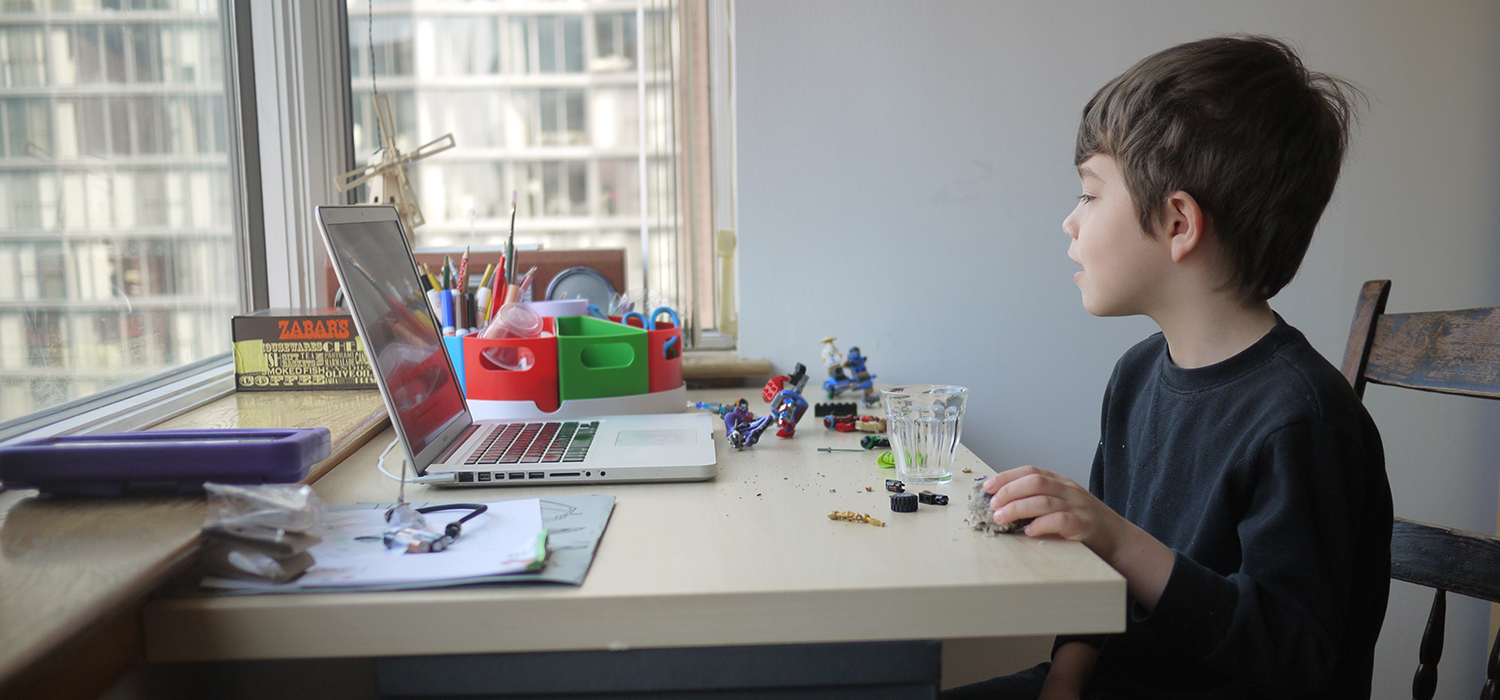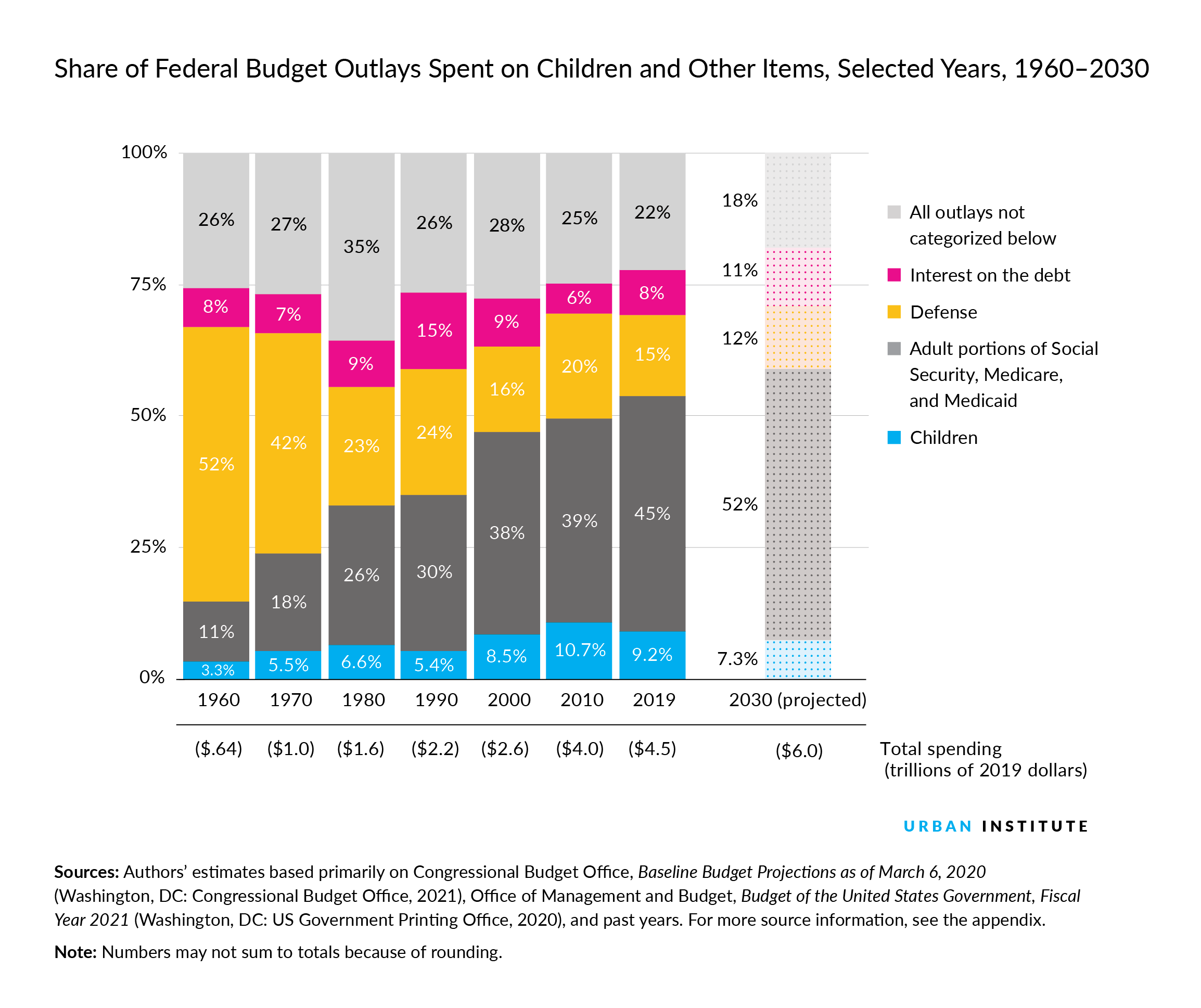
The economic and public health crisis stemming from the COVID-19 pandemic and the civil action and protests following the police killings of George Floyd, Breonna Taylor, and others have made 2020 an inflection point for systemic change. Congress has approved trillions of dollars to respond to the pandemic, and people around the country are calling for and discussing proposals to defund the police and redirect those funds to social needs and community development. The time is ripe for reexamining how we prioritize and spend taxpayer dollars.
The Urban Institute’s Kids’ Share 2020 report, released today, gives policymakers a chance to evaluate their role in supporting America’s children for the next decade. The data show where federal spending on children was headed before the pandemic and illustrate that long-standing budgetary forces will likely influence where we’ll be in 2030.
What spending on kids looked like before the pandemic
Even before the pandemic, many children lived in families with low incomes and experienced material hardship, food insecurity, or both. And a history of racist policy and practices means that children of color are disproportionately likely to experience these challenges—a gap that’s expected to widen because of the pandemic. Federal programs and public spending on children can help kids reach their full potential and address these disparities.
In 2019, roughly 9 percent of federal spending was invested in children, with a little more than half of that investment targeted to children in families with low income. A much larger share of the federal budget (45 percent) was spent on retirement and health benefits for adults through Social Security, Medicare, and Medicaid.

Where we were headed before the pandemic
Projections of future federal spending made before COVID-19 that don’t take into account its economic effects or subsequent legislative responses show the children’s share of the federal budget dropping from about 9 percent to about 7 percent over the next decade. At the same time, the projections show automatic spending on Social Security, Medicare, and Medicaid increasing from 45 percent to 52 percent of spending over the next decade. Federal spending on interest payments on national debt is projected to consume 11 percent of 2030’s budget.
Where are we headed now?
The COVID-19 pandemic and response have rapidly and dramatically altered the economy and shifted government expenditures. Growing deficits arising from the economic downturn and federal response to the COVID-19 crisis, along with the rising entitlement spending already scheduled in current law, will continue to squeeze the budget for children in the long run.
Public and private investments in children during their crucial formative years have far-reaching societal consequences, affecting the quality and strength of tomorrow’s workforce, economy, and educational, criminal justice, and health systems. For example, nutrition benefits, housing assistance, and health insurance programs support children’s needs for food, shelter, and good health, while investments in early education and public schools promote learning and equal opportunity.
During this time of widespread calls for change, as America takes this to opportunity to assess how well our current and projected federal investments align with our national priorities, we would be wise to reconsider our investments in children and the long-standing budgetary forces that shape them.
Tune in and subscribe today.
The Urban Institute podcast, Evidence in Action, inspires changemakers to lead with evidence and act with equity. Cohosted by Urban President Sarah Rosen Wartell and Executive Vice President Kimberlyn Leary, every episode features in-depth discussions with experts and leaders on topics ranging from how to advance equity, to designing innovative solutions that achieve community impact, to what it means to practice evidence-based leadership.